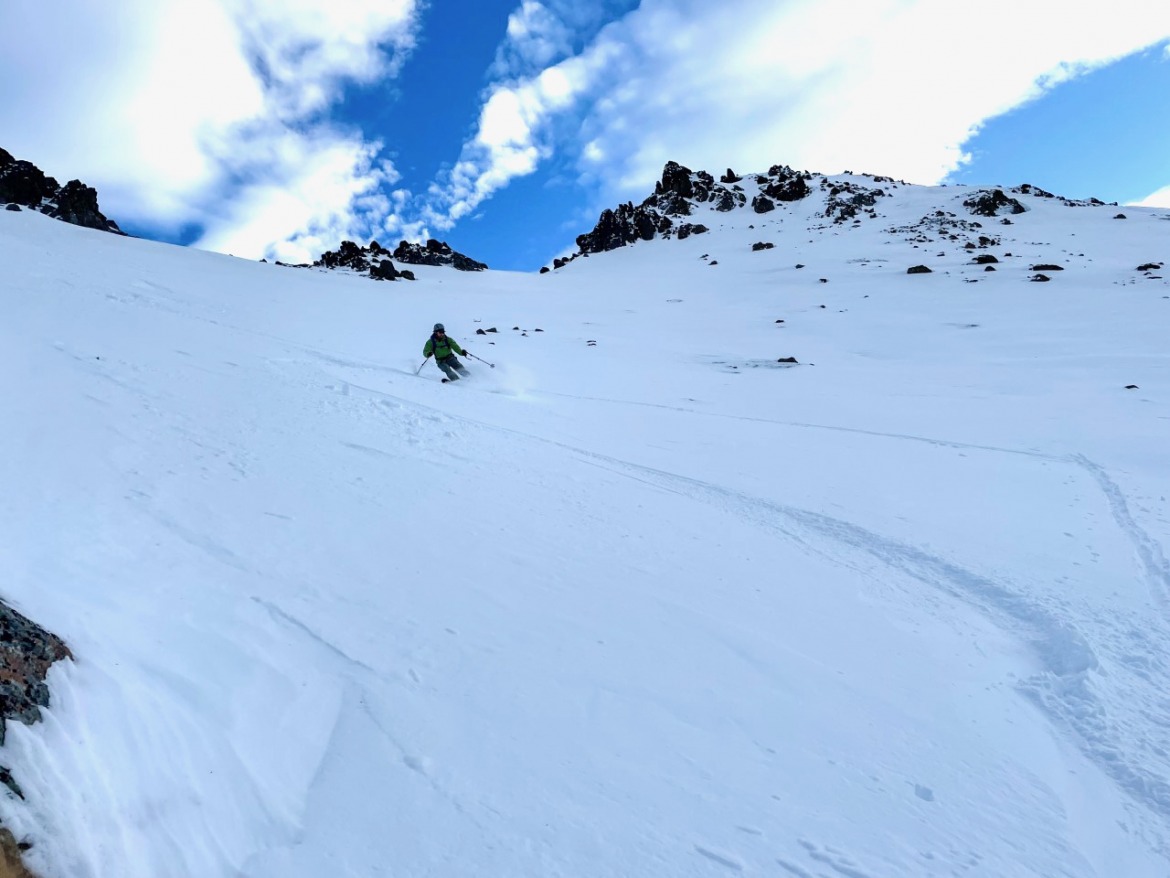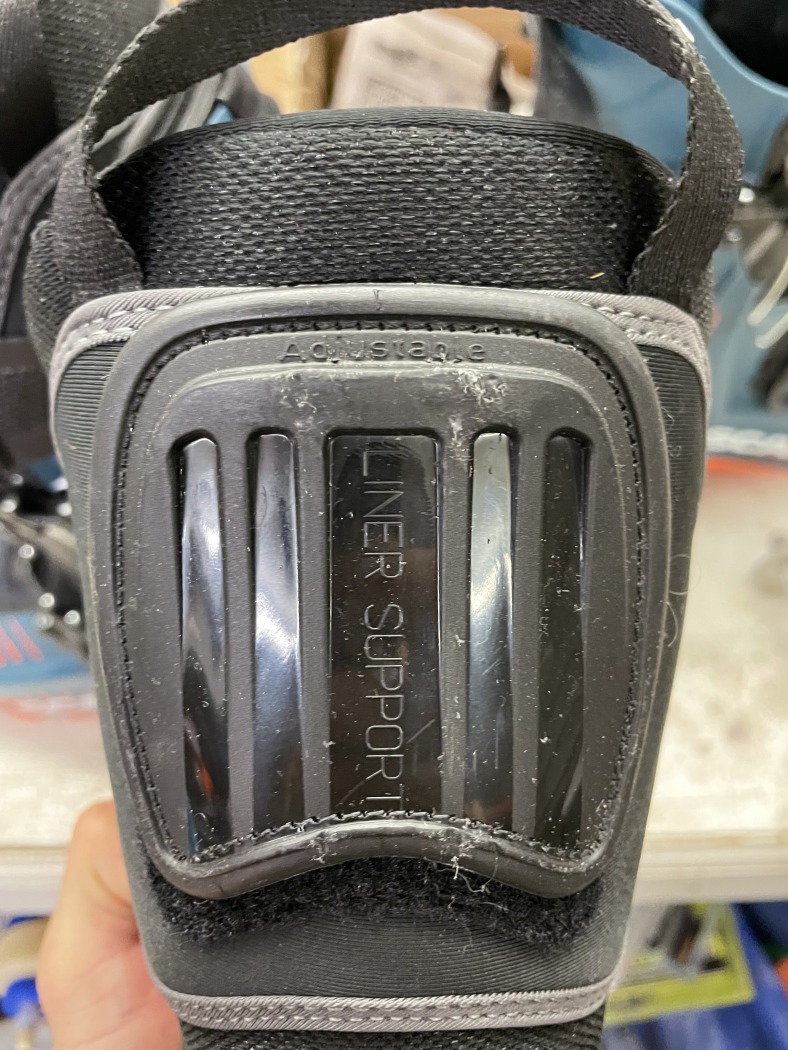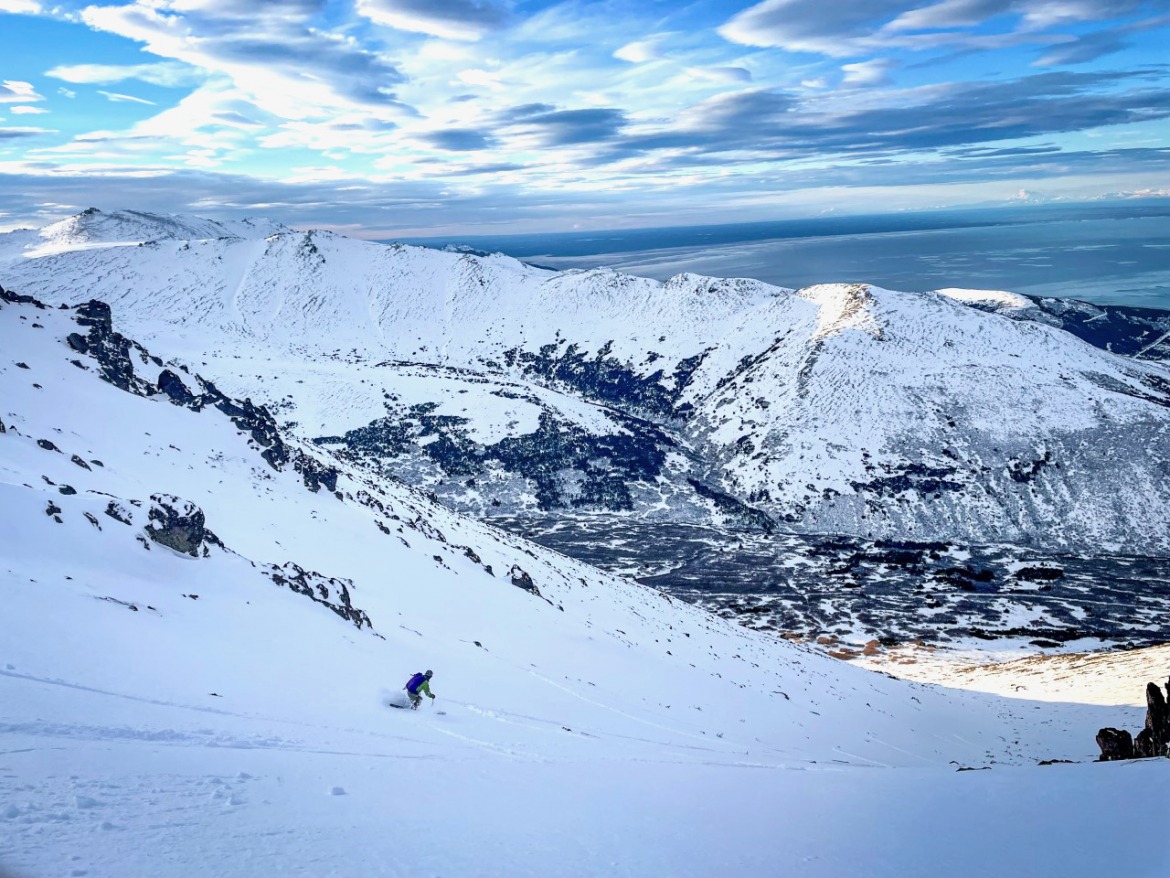
Taking the F1 GTs out for a spin. The boot’s progressive flex allows for great sensations when driving the ski in and out out turns.
Scarpa’s F1 GT piggybacks on the basic design of the venerable F1 LT. The GT’s softer flex and buckle closure offer another lighter weight option for those seeking a near do-it-all boot.
As someone who grew up riding lifts, I initially saw touring as a means for “earning turns.” Over time, I have learned to enjoy touring for its own sake. Now it’s not just about the turns but also about exploring the endless mountains Alaska offers. The crux in moving from a downhiller to an uphiller was acquiring the proper gear. Most importantly to me, this meant finding my ideal ski boot.
My ski-boot journey led me to the Scarpa F1 GT, a boot that, while built as a fast and light “skiing machine” by Scarpa and perfect for long traverses in the Alaskan wilderness, also fits into a category that allows for great pleasure in all aspects of skiing the backcountry.
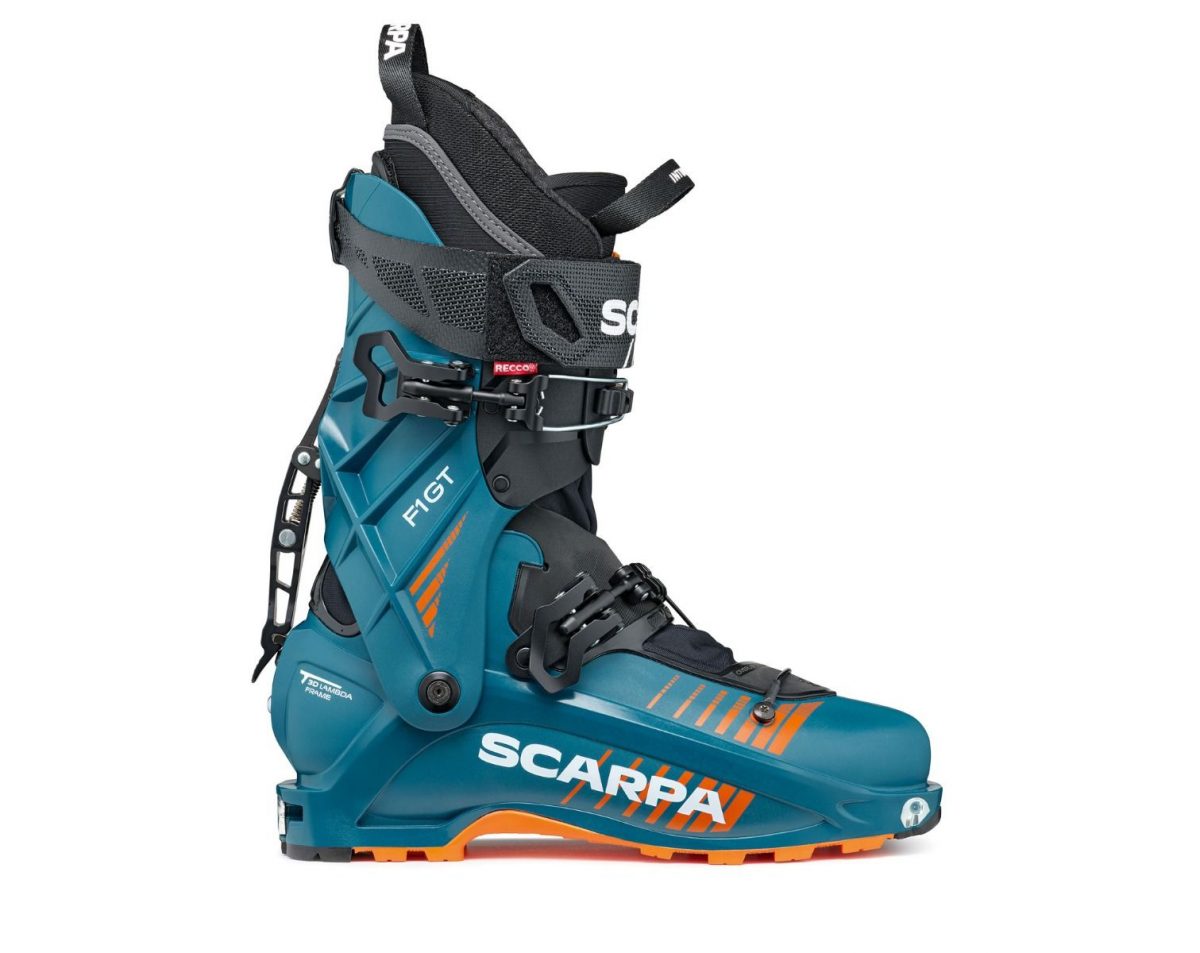
A clean look at at the F1 GT. This boot deviates from the F1 LT in construction and closure systems.
F1 GT Stats
Size Tested: 28
Weight (28): 1240g/boot
ROM: 72 degrees
Forward Lean (adjustable): 9, 11, or 13 degrees (+/-2)
Shell Material: Grilamid with fiberglass (this is punchable)
Liner: Intuition Tour L T2
Sole: Vibram UFO LT
Closure: Upper buckle, full-size powerstrap (removable), and a lower buckle.
Price: $798.95
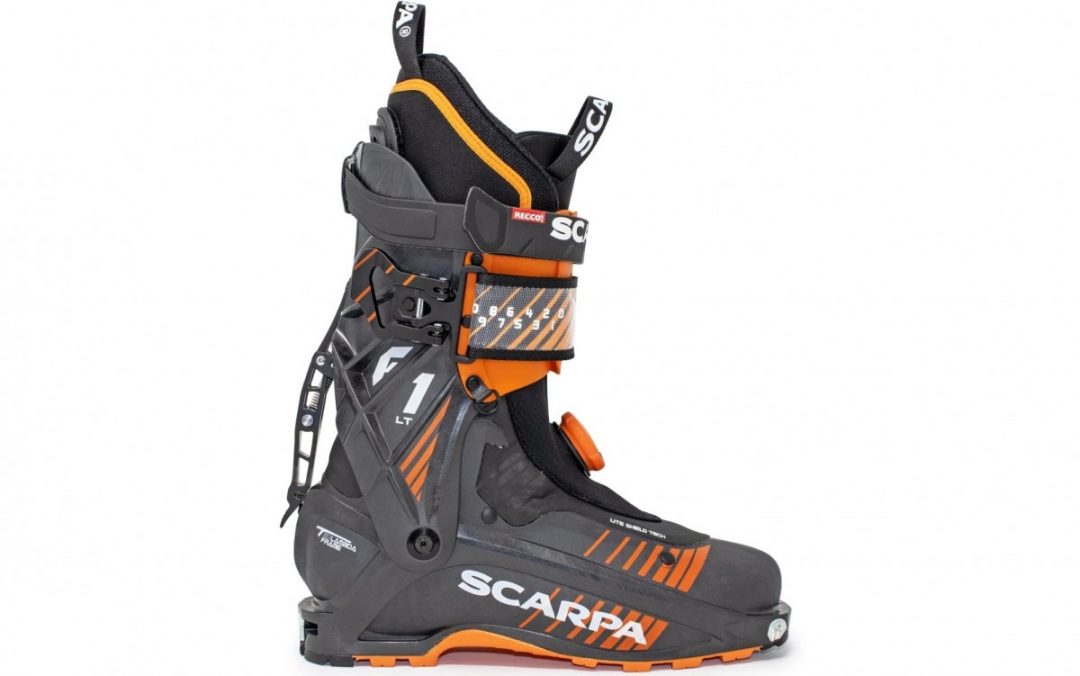
The Scarpa-f1-LT shares some DNA, but is a lighter stiffer option with a BOA closure over the instep and a buckle/powerstrap + mini-powerstrap securing the upper.
These boots come in at 1240g in size 28. They have a 100mm last and 90-ish flex (though with the large power strap up top, you can crank em’ down, and they feel closer to a 100 flex, in my opinion). Check out Alex Lee’s first look for more of the nitty gritty.
I began this journey looking for a light and comfortable boot for long travel days but burly enough to withstand the cold and support a 30-40 lb multiday pack.
The boots satisfying these criteria were to be tested on a “shakedown” trip on the North side of the Alaska Range near Delta Junction last spring. In a scramble to get something together on time, I scored a third-hand pair of Arc’teryx Procline Carbon Lites. These were lighter (and cheaper) than any boot I had owned, but they just didn’t work for me. They ran a bit small, and I found myself wanting more stability and warmth for their weight. My tripmate, Alex, informed me of the perfect alternative, sitting in his garage some 300 miles away, a pair of Scarpa F1 GTs. I did my best to suffer crushed toes in silence.
The Skiing
I eventually stepped into the Scarpa F1 GTs on a pair of Black Diamond Helio Carbon 95s, and they satisfied everything I was looking for. They offer excellent mobility and comfortable touring while maintaining just the stiffness and warmth I sought.
For a first run in these boots, I put down a couple of the first winter tracks on Peak 4, a classic of the Chugach front range outside my hometown of Anchorage, Alaska. I met Alex at the trailhead at a crisp 8:45 AM (a real alpine start here this time of year), giving us enough time to adjust the skis to the boots in a surprisingly warm parking lot and start skinning all before sunrise at 9:30.
The clear skies were already glowing. But, a dramatic inversion had set in with temperatures of 17 degrees in Anchorage and 34 degrees at the trailhead. We skinned up the trail past Peak 3, which looked a bit shark-infested for us, and it was also tracked.
It wasn’t far to Peak 4, and we were soon putting in switchbacks. At first, the snow seemed a bit sunbaked and punchy, but each kick turn brought us back out of the inversion and into progressively softer and “actually pretty good snow.” Before long, we had gained the ridge and were making our transition in full-on winter pow.
Until this point, I hadn’t thought about the boots—amazing. When trying new boots, I am usually hyper-focused on potential hotspots because I hate getting blisters. Thankfully, the GTs weren’t rubbing. For this, the boot’s mobility helps too. These boots cover a greater range of motion than my ankles and are comfortable enough to make my toes curse my past self and my willingness to suffer through discomfort.
As I locked into ski mode, I could feel that the boots lean a bit toward a high-volume fit. I fiddled with them a bit more but couldn’t lock my feet down the way I wanted. This wasn’t an issue in the soft snow closer to the ridge, but the funky variable snow down low amplified all that wiggle room. After these first turns, I threw in aftermarket insoles to fill up some space. This sacrificed none of the touring comfort and worked great for my low-volume feet. The reduced movement actually fixed some areas that I suspect may have become hotspots on longer days.
After tinkering with the fit, I took the same setup on a sunset lap to Arctic Valley, another popular spot outside of Anchorage. Unsurprisingly, most of the aptly named area was windswept or windboard, but we found an untracked gully protected from wind.
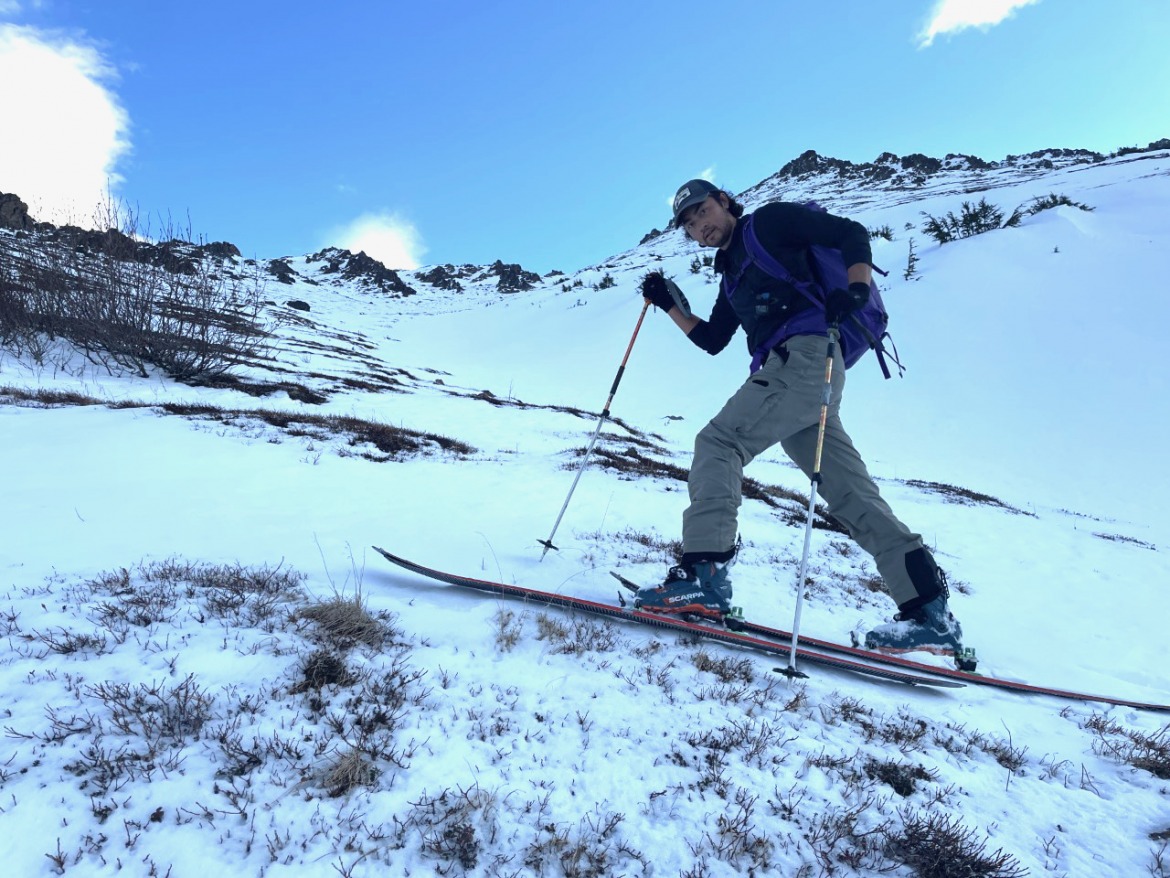
With the claimed and accurate 72 degree range of motion, the F1 GT continues the F1 LT’s bliss on the uptrack.
The GTs made easy work of variable conditions. I felt secure on the wind-effected snow surface near the ridgetop. As I entered the gully, it was immediately clear that the best snow was right down the gut, creating a rather narrow corridor of true powder. I stuck to this good snow, taking tight and quick turns, and feeling controlled yet free to open it up. Again, I didn’t really think about my boots and just enjoyed seamless power transfer, foot support, and ski control from the GTs.
I only have a little experience skiing lighter boots, but these exceeded my expectations on the downhill. It appears that downhill performance translates well to stability for a heavy pack. Great for the rare winter camping trip, but also exciting for secure feet and balanced turns on any of the usual single-day objectives.
The Features
As far as the specific features go, I am partial to the two-buckle system for its strength in locking my feet down and because it’s what I’m used to. On the other hand, it doesn’t have the low-profile, speed, or micro-adjustability of the Boa mechanism.
I’m also happy about the Speed Lock ski/walk mechanism. It’s a little beefier than others out there, but it seems durable and less likely to ice up with the added option to adjust the forward lean from 9° to 11° to 13°. As a final plus, the power strap and liner spoiler are easy to remove for when you decide to shave off a couple of ounces at the last minute.
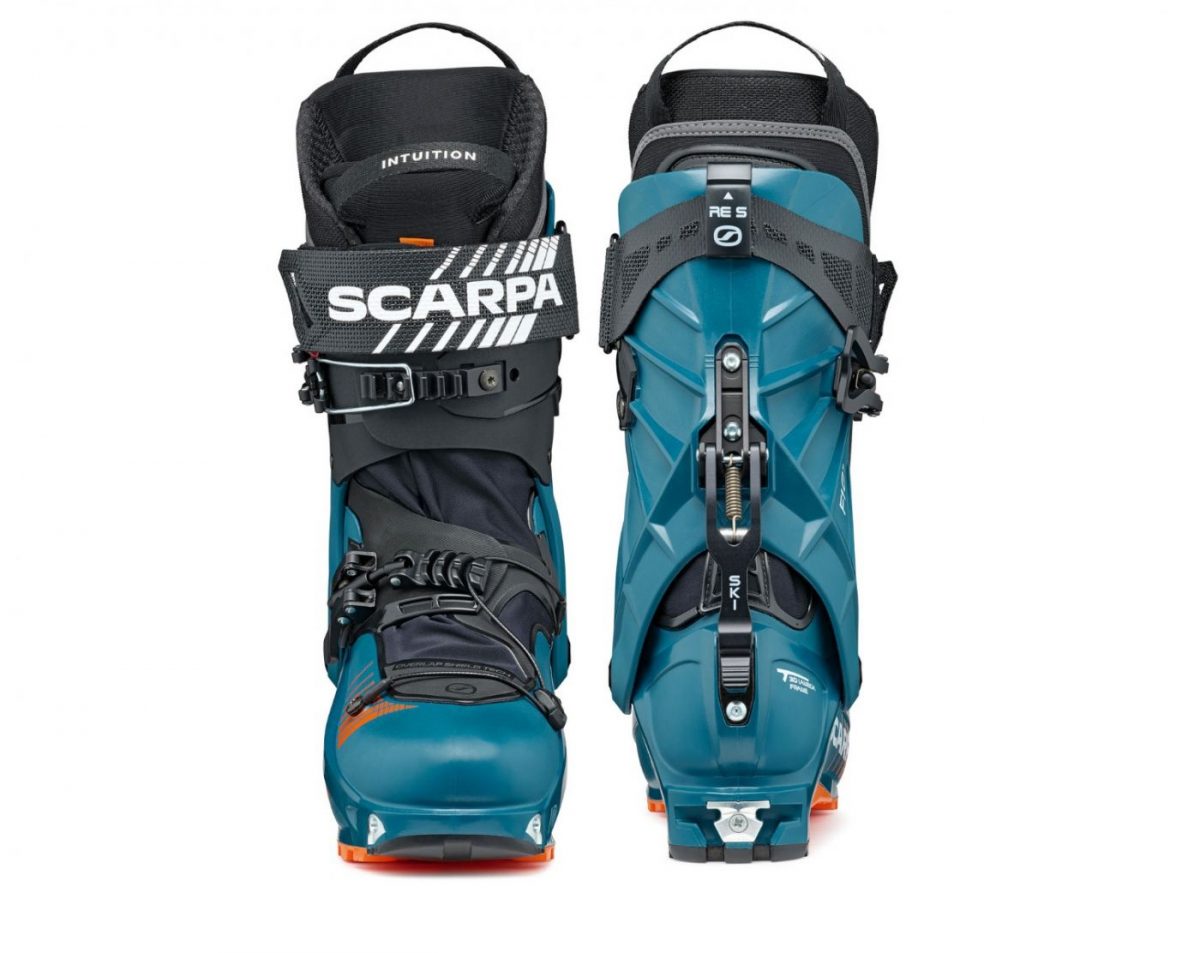
A shot of the boot’s front and rear. The softer flex and buckle closure system offer another option in the Scarpa lineup.
The Scarpa F1 GTs make a great entry-level ski mountaineering boot. It’s softer than its sibling, the highly praised F1LT. That boot has become a staple for those seeking a stiff and light boot.
The F1 GT deviates a bit from the Scarpa F1 LT beyond the stiffness and lower shell BOA closure. This newer, yet softer boot, employs a buckle closure on the upper cuff that is separate from the power strap. The GT’s powerstrap sits above the buckle and is a full-width powerstrap. Conversely, the F1 LT’s upper buckle secures the main powerstrap, while a smaller or mini-powerstrap sits above it to further secure the boot’s upper.
A few other differences. The F1 LT uses carbon-infused Grilamid in the upper and lower shell. Whereas the F1 GT’s shell is Grilamid reinforced with fiberglass, making it softer: this also allows for a more progressive flex. If you are driving smaller/lighter skis, the F1 GT’s flex pattern might better suit your skiing style. This is to say you have choices if the Scarpa fit is to your liking.
Those (en)lightened skiers promised me comfort and ease of travel with reasonably good downhill performance – and they delivered. The Scarpa F1 GT has dissolved past fears of lighter gear, meaning an awkward fit and wobbly turns.
Now I see that the ski can be as fun as the tour.
Russell Wong is a graduate student at Alaska Pacific University where he studies the ecological effects of climate change. He has had the good fortune of mixing wilderness travel with field research.

